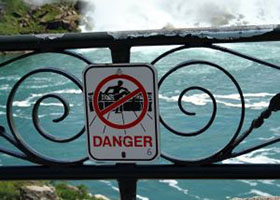


Well, it turns out I’m actually not all that creative, as I learned this morning that the New Zealand Superannuation Fund (a perennial innovator) has been using a permissible loss estimate in its communication strategy with stakeholders for some time. I saw the estimate for the first time in the fund’s new Statement of Intent, which, by the way, is worth reading in its entirety. (It’s a remarkable document; I could write five different posts from the material in there.) Anyway, here’s a blurb about the NZSF’s “worst case downside return” estimate:
“Financial market returns are inherently volatile. In any given period actual returns will fall somewhere within a wide range of possible returns. For the estimated ‘worst case’ downside return we look at lowest percentile expected return (or a 1-in-100 event) for the period. If actual returns are worse than this, then either a rarer-than-expected event has occurred or we have taken more risk than we assumed.
Our ‘worst-case’ modelling work (based on a 20-year investment horizon, which is also the basis for the Reference Portfolio) suggests there is a 1-in-100 chance of Fund returns being worse than: -31% in any one year; -5% p.a. in any consecutive five-year periods; or -3% p.a. in any consecutive 20-year period. In any such case, we need to explain what has happened (and will do so in the relevant period’s Annual Report).”
That’s actually really cool. And no doubt the estimate will be useful for oversight committees and stakeholders. In a way, the act of publishing a permissible loss level serves to manage the expectations of the fund’s stakeholders. And, crucially, if the fund has public ‘buy in’ for the operations (including potential losses), then the public would (in theory at least) not challenge the viability of the SWF during short- to medium-term downturns in the market (unless of course returns dropped below the permissible level). And this ‘freedom to operate’ has important commercial benefits, as it ensures that the fund’s investment horizon will remain long-term, and that it will never have to sell assets at a discount because domestic stakeholders changed their minds about a certain strategy or policy.
In other words, taking a long-term investment approach requires managing short- and medium-term return expectations (both on the upside and downside). And as I’ve said several times, I think SWFs can generate market-beating returns by taking a long-term view and moving beyond the short-term noise. Perhaps this “permissible loss level” is a useful tool in this regard.
This post originally appeared on the Oxford SWF Project
